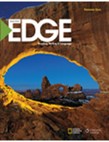Saint Paul American Schools
Textbook Lists
| Course | Book Title | |
|---|---|---|
| MS English |  |
Edge Level A |
| ESL English |  |
Edge Fundamentals |
| General English 9 |  |
Edge Level B |
| General English 10 |  |
Edge Level C |
| Course | Book Title | |
|---|---|---|
| MS English |  |
Edge Level A |
| ESL English |  |
Edge Fundamentals |
| General English 9 |  |
Edge Level B |
| General English 10 |  |
Edge Level C |